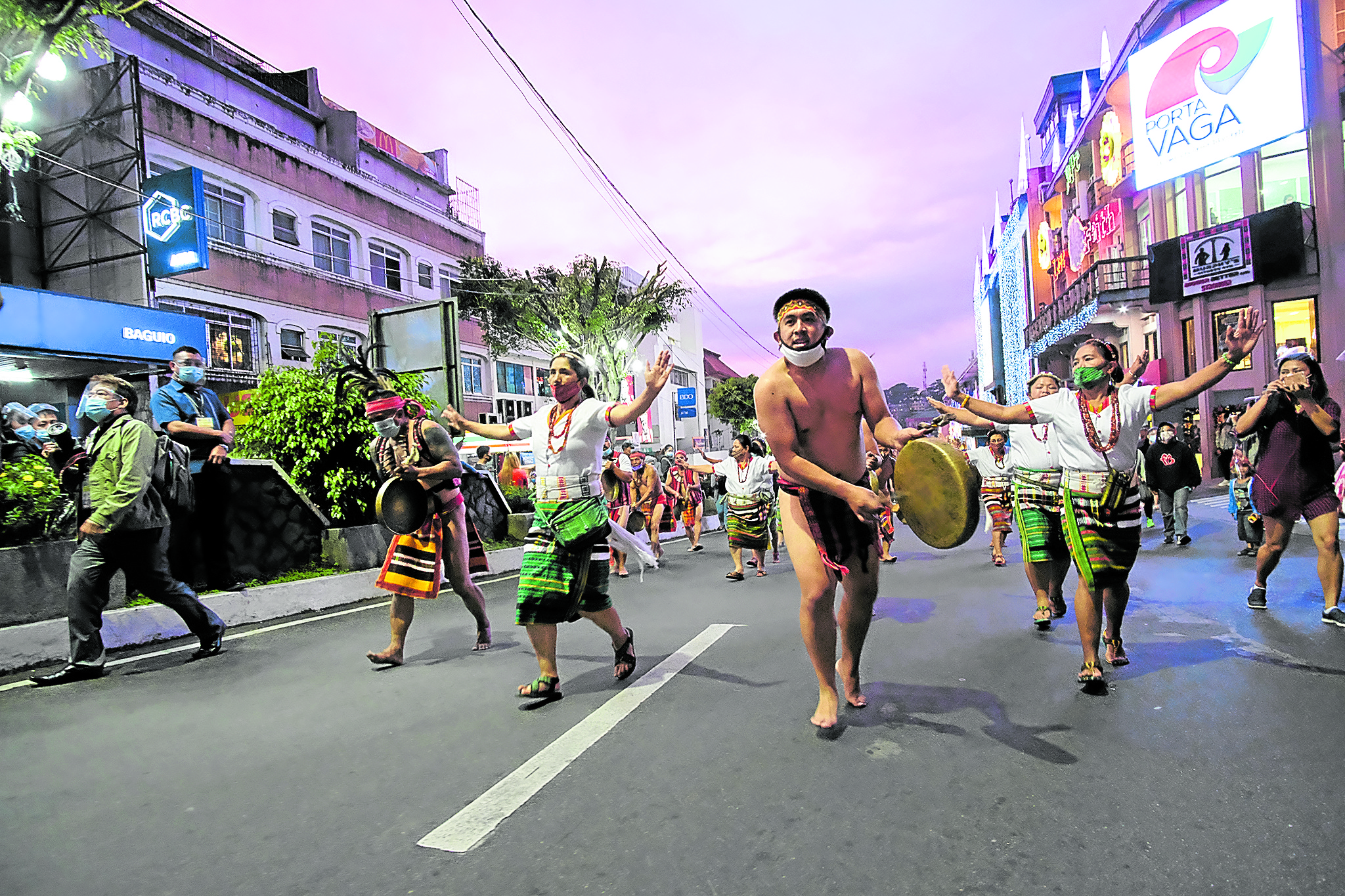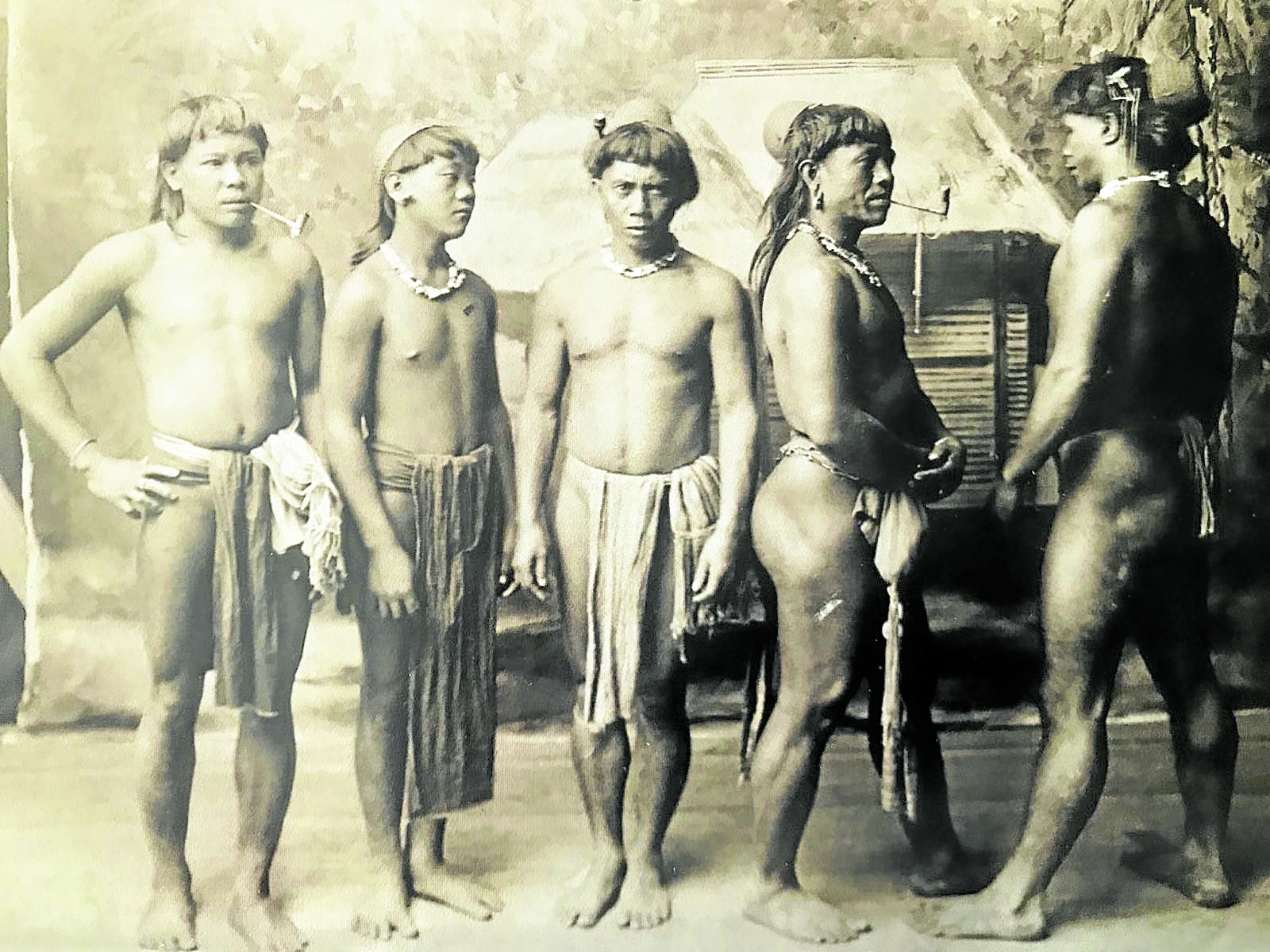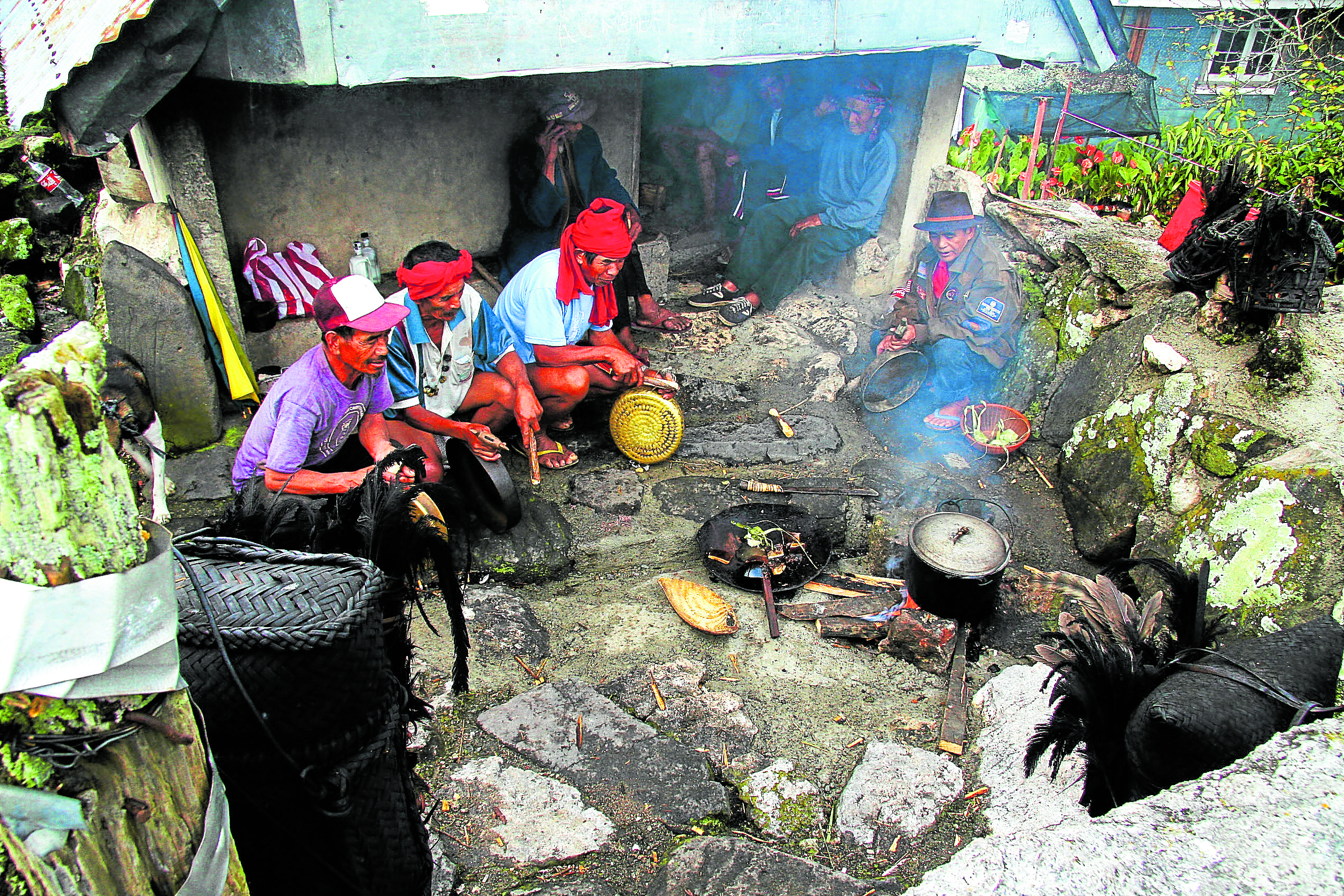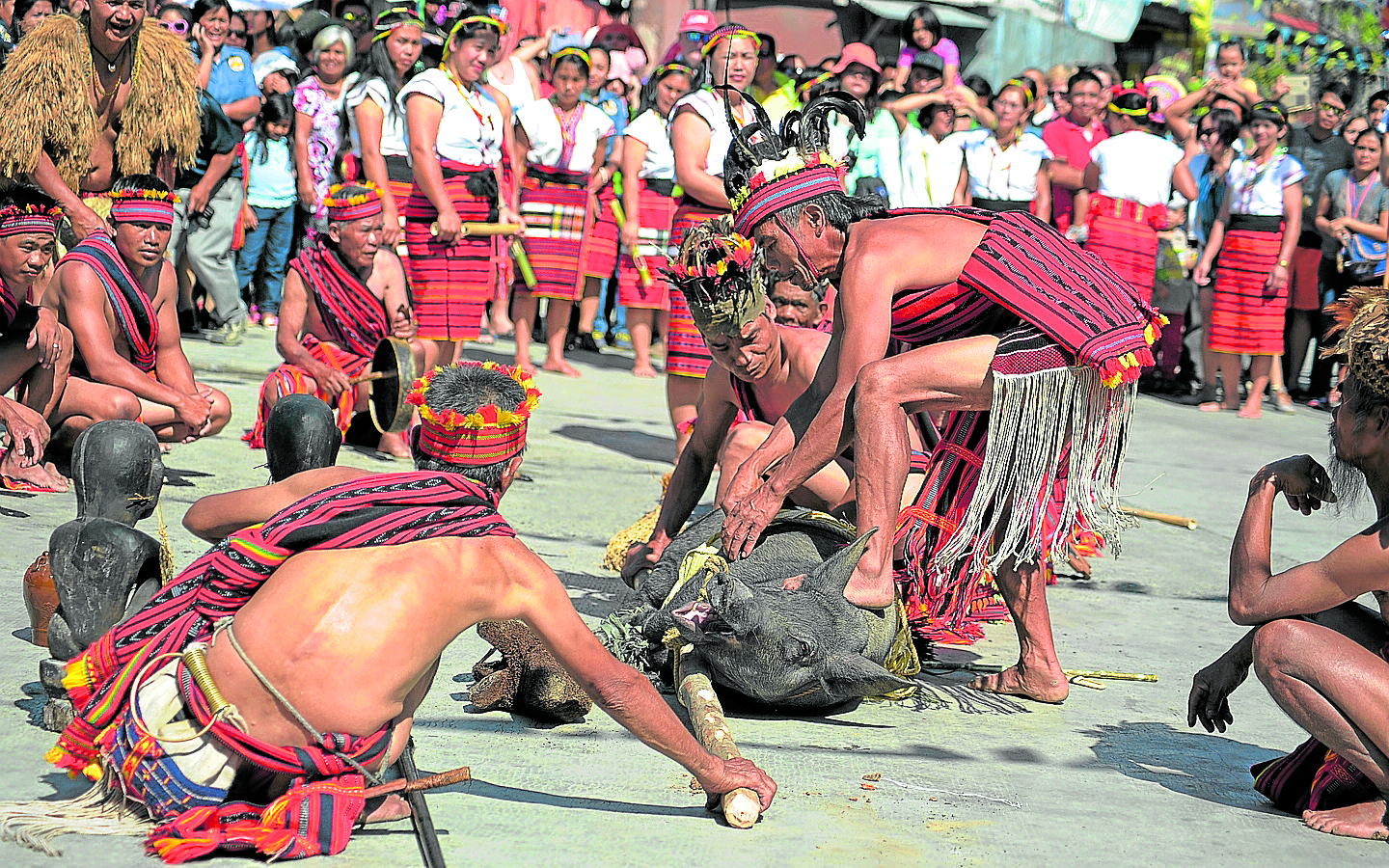Learning from Cordillera’s ways of battling diseases

ROAD TO RECOVERY Baguio City residents of Cordilleran descent dance to the rhythm of gongs on Dec. 1, when the summer capital launched activities for its Christmas celebration amid the coronavirus pandemic. The city, which is heavily dependent on tourism, has started welcoming visitors subject to health protocols. —NEIL CLARK ONGCHANGCO/CONTRIBUTOR
BAGUIO CITY—When villagers in Bontoc town, Mountain Province, encounter an ailing visitor at their borders, he or she is quickly escorted to a shelter far outside their homes where the person can recuperate without contaminating anyone else.
Should the infection spread, however, the village elder declares a lockdown and installs wards around the neighborhood to remind residents that they must stay indoor until the crisis has passed.
Community members are forbidden from going to their rice fields or fetching wood from the forests. No one is allowed to make noise or roam around.
This account would fit nicely in the year of the coronavirus pandemic, but this came from Spanish missionaries and scholars who recalled how Cordillera residents survived the smallpox or cholera epidemic in the 18th and 19th centuries, and the Spanish flu outbreak in 1918.
Protocols for quarantine and lockdown and physical distancing were not alien for indigenous Filipinos who lived through their own epidemics, according to anthropologist June Prill-Brett, professor emeritus of the University of the Philippines Baguio.
The diseases were acquired whenever villagers went to the lowlands to trade, so “cargadores” (loaders) who traveled back home were immediately isolated, Brett said in her online lecture on Dec. 8.
Untrusting
In the book, “The Discovery of the Igorots,” scholar and historian William Henry Scott had established that Cordillera tribes did not trust Spanish missionaries and officials who reached out to them, fearful that they brought strange diseases.
In 1786, for instance, a smallpox outbreak was recorded in the towns of Angadanan, Cauayan, Carig and Camarag, all in Isabela province, alarming people who fled back to their villages.
A missionary’s account cited by Scott said: “The Igorots have practically none of the things to which the small population of Indios is usually attributed—smallpox, venereal disease and leprosy … They take sufficient care of the mountain passes to prevent the entrance of smallpox and other epidemics from the Christians.”
Some villages in the Cordillera took the quickest option and abandoned settlements struck by the epidemic, Brett said.

BONTOK MEN This archival photograph shows Bontok men in their “bahag” (G-string or loincloth). The Bontok culture has quarantine protocols against diseases which have been set in place in local communities centuries ago. —PHOTO PUBLISHED IN THE MUSEO KORDILYERA 2020 CALENDAR OF THE UNIVERSITY OF THE PHILIPPINES BAGUIO
Practical mechanisms
But among Bontok families who lived in the towns of Bontoc, Barlig and Sadanga in Mountain Province, quarantine and social distancing became practical mechanisms, Brett said.
Decision-making in Bontok, a farming society, was left to a council of elders who were “affiliated with their respective ‘ator,’ or ‘dap-ay’ (gathering place), that handled the internal and external affairs of the community and welfare of the whole village,” she said.
They ordered infected people to stay at the fringes of the village or the nearest mountain.
Reflecting on the antagonism and discrimination associated with some COVID-19 patients and carriers, Brett said the ailing visitors or community members in the past were not shunned. They were fed regularly by the community until they recovered, she said.

RITUAL Elaborate rituals, like “begnas,” are performed in the Mountain Province town of Sagada to invoke ancestors’ spirits to keep the community safe and healthy. Elders occasionally undertake a healing ritual called “daw-es” for community members who suffer unexplained illnesses. —ROLAND RABANG/CONTRIBUTOR
Total lockdown
Residents maintained their distance and did not come in contact with the sick so a designated villager would periodically call out to them and wait for a response, she said.
Those who were healed were first required to undergo a purification ritual before they could return to their homes.
The community automatically went into “teer si luwas,” or total lockdown, once more people fell ill. The elders then would activate the “ngilin,” or a sacred village lockdown, that came with a set of rituals aimed at driving away bad spirits that brought the disease.
“Cooperation is therefore crucial to the community,” Brett said.
The villagers would install symbolic gates, called “puchong,” at the community perimeters to expel belligerent spirits and keep people inside.
Pork fat, pig ears and dried bones were hung at the puchong beside a small fire “kindled by rice husks that must keep burning until the next day,” Brett said.
People who defied these rituals were fined for putting the community at risk, she said. One account said the most serious penalty was confiscation of farmlands. This was because villagers believed that violating the rules meant more lives would be lost.

VALUING CULTURE Cordillerans value traditions handed down by their ancestors, like sacrificing ritual pigs during community gatherings and festivals, so they can stay grounded and connected to their culture despite modernity. —EV ESPIRITU
Sacrifice
According to Brett, quarantine lasted from two to five days, depending on how ritual priests read the bile of chicken that was sacrificed by the community.
“Temporary village confinement periods are still practiced today, carried out by individuals, households or villages during rice agricultural ritual activities and important events that involve the whole community,” she said.
The coronavirus pandemic shows “an increasing preference to take sick people to the hospital,” now that Cordillerans have shifted the responsibility for their health from their elders to doctors, she said.
For more news about the novel coronavirus click here.
What you need to know about Coronavirus.
For more information on COVID-19, call the DOH Hotline: (02) 86517800 local 1149/1150.
The Inquirer Foundation supports our healthcare frontliners and is still accepting cash donations to be deposited at Banco de Oro (BDO) current account #007960018860 or donate through PayMaya using this link.